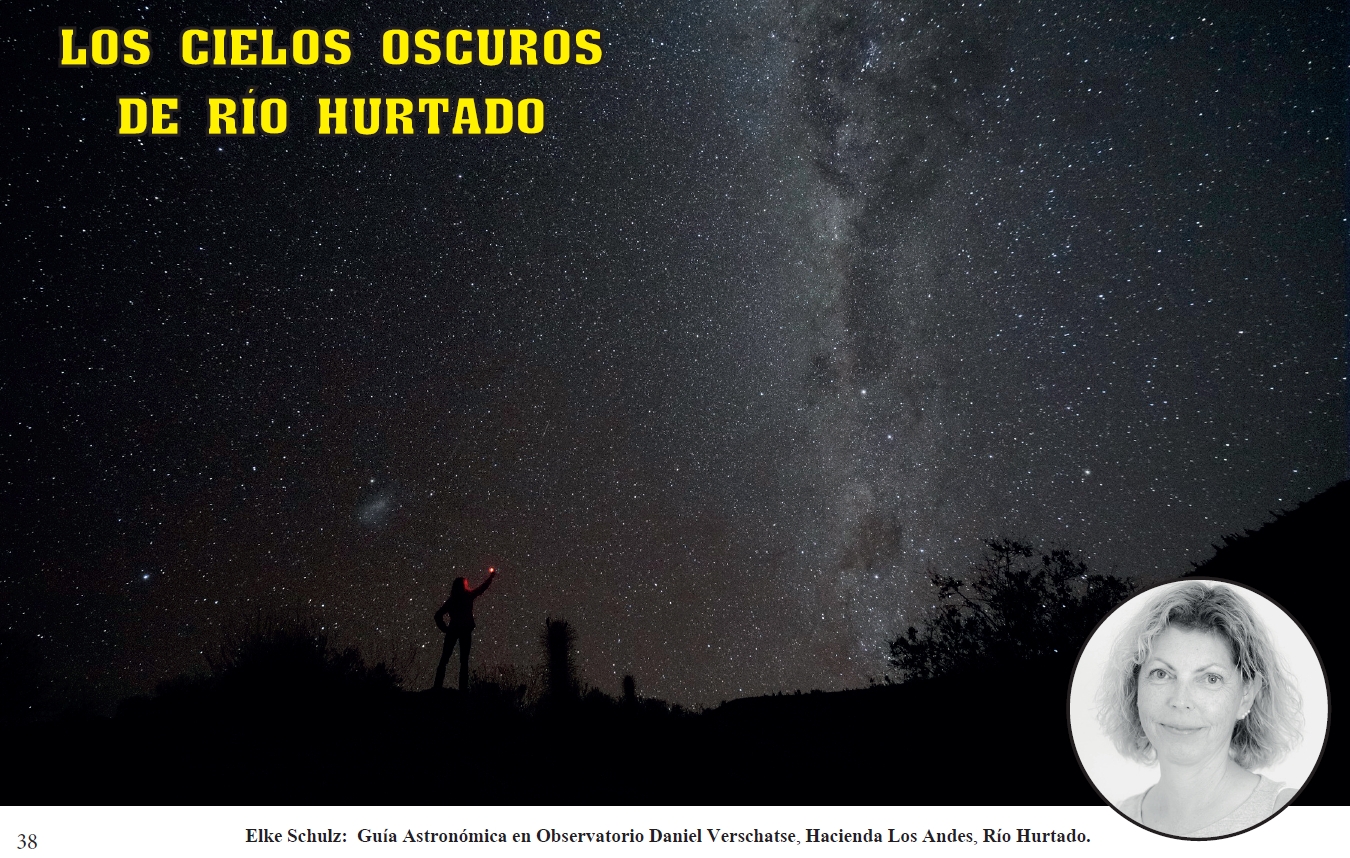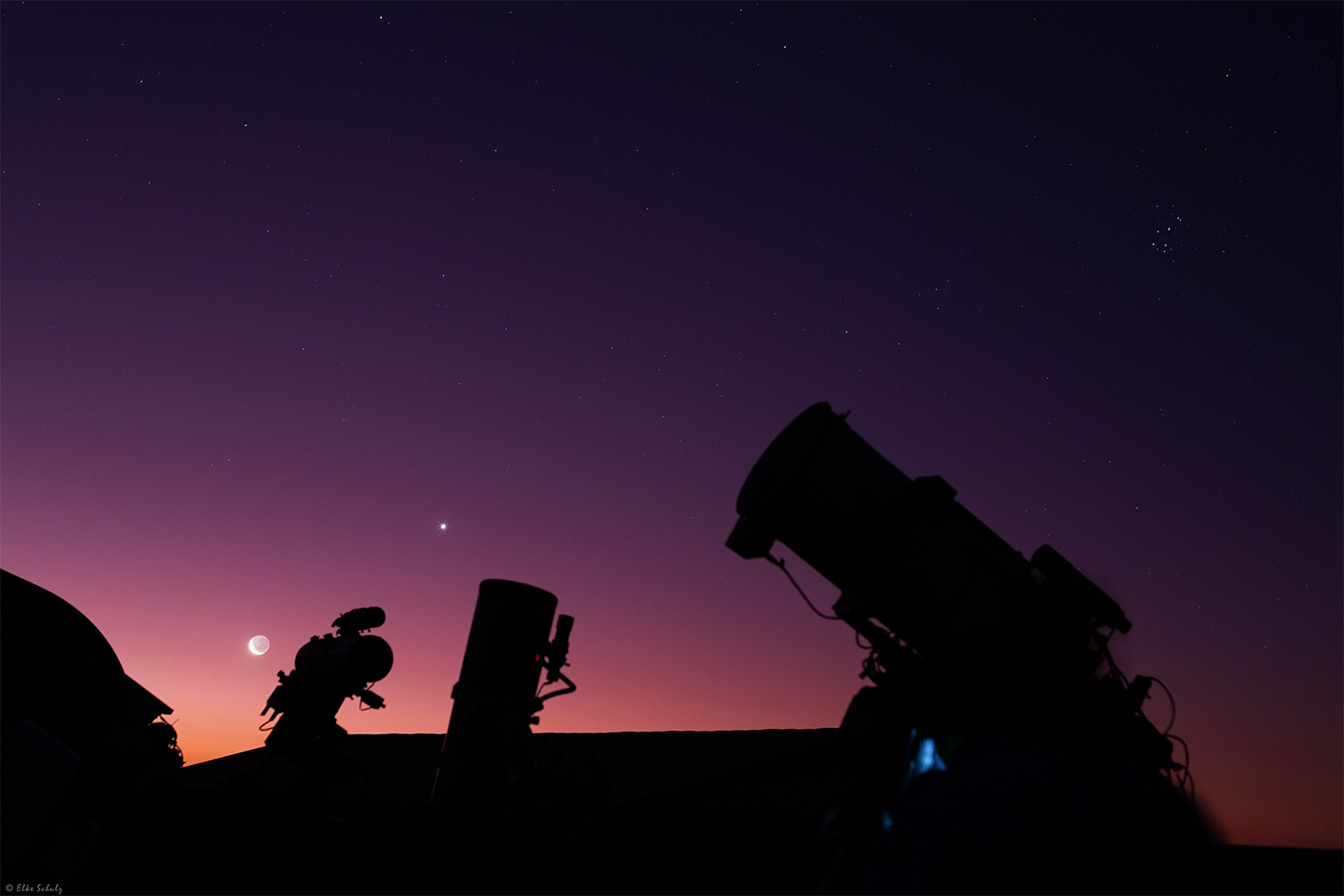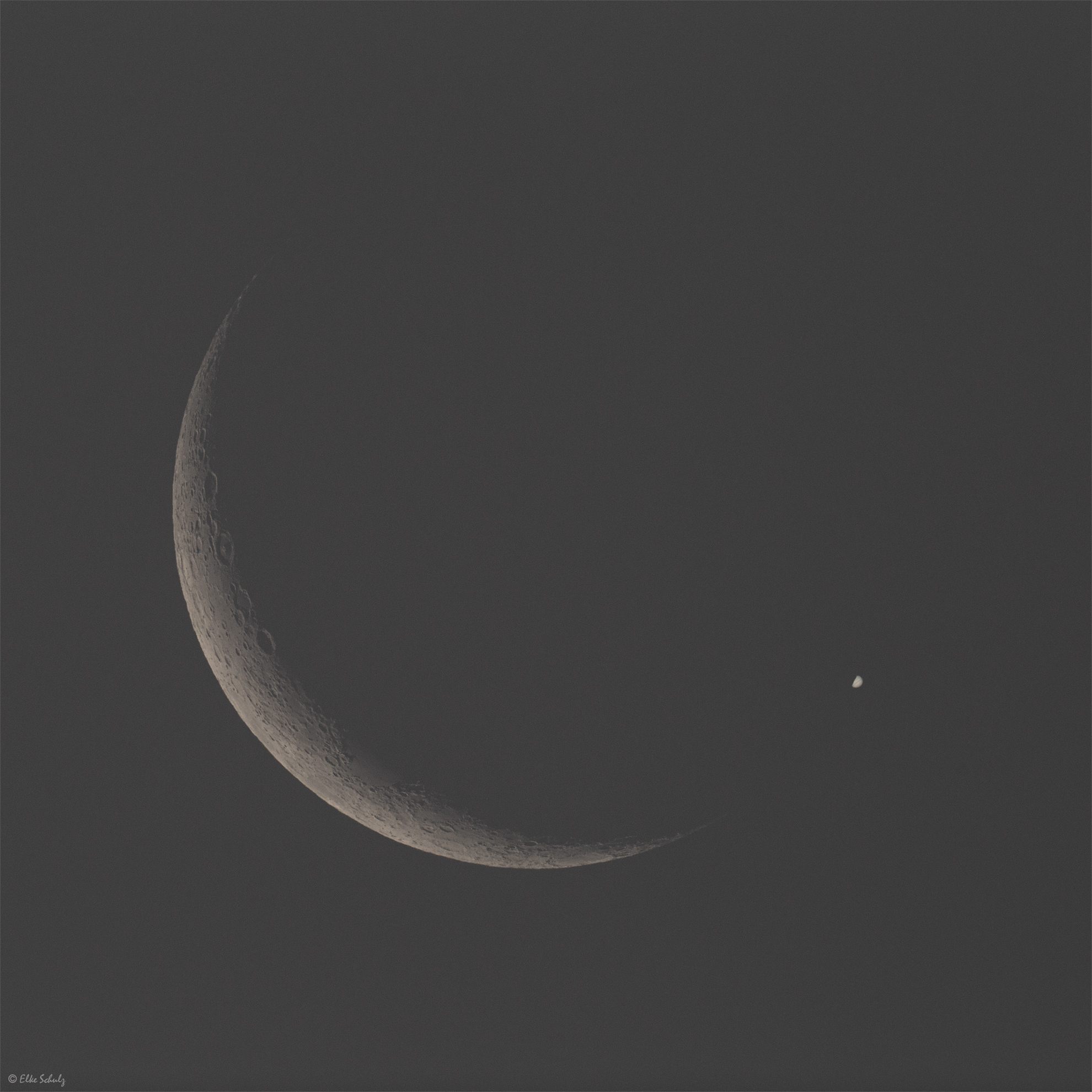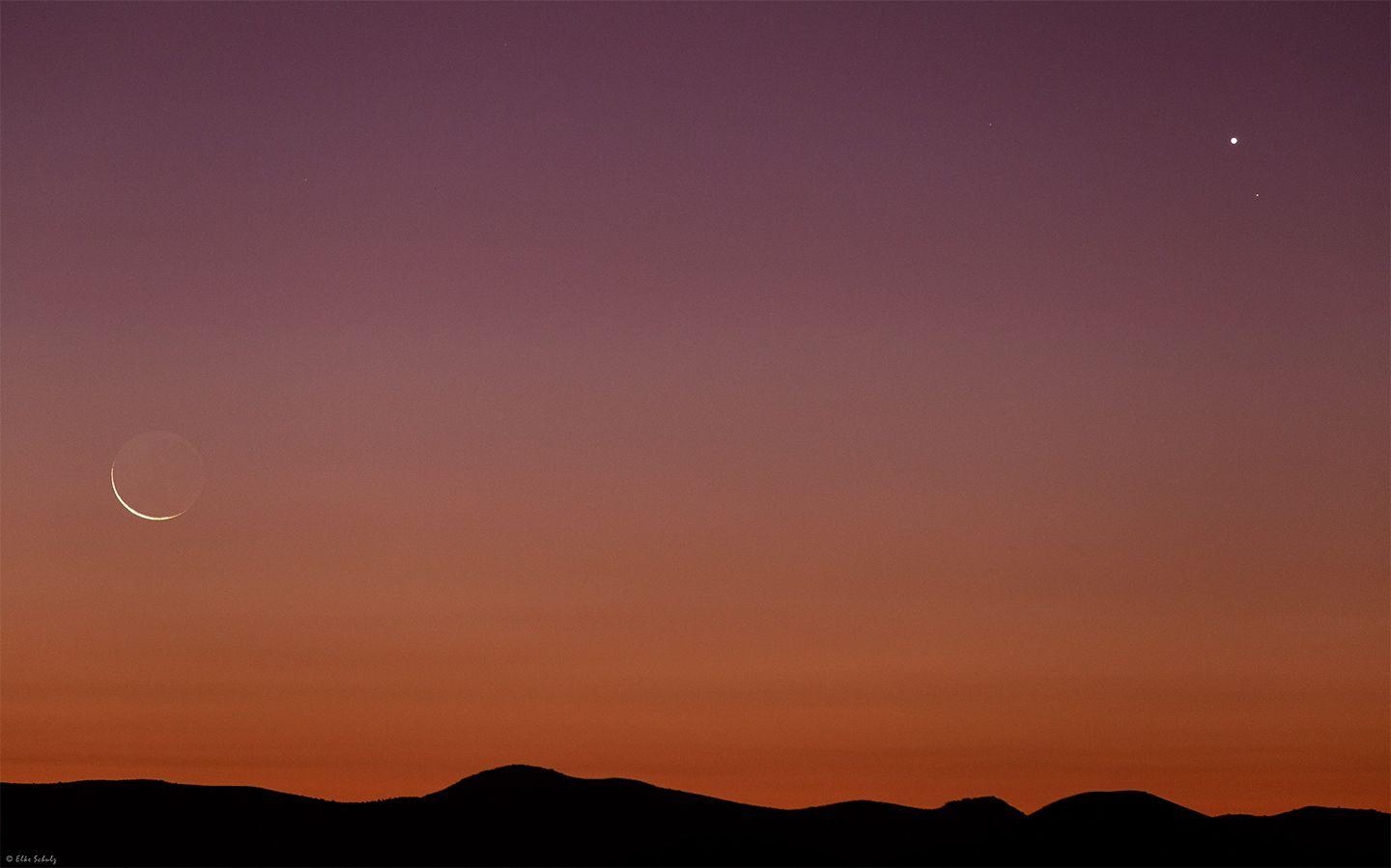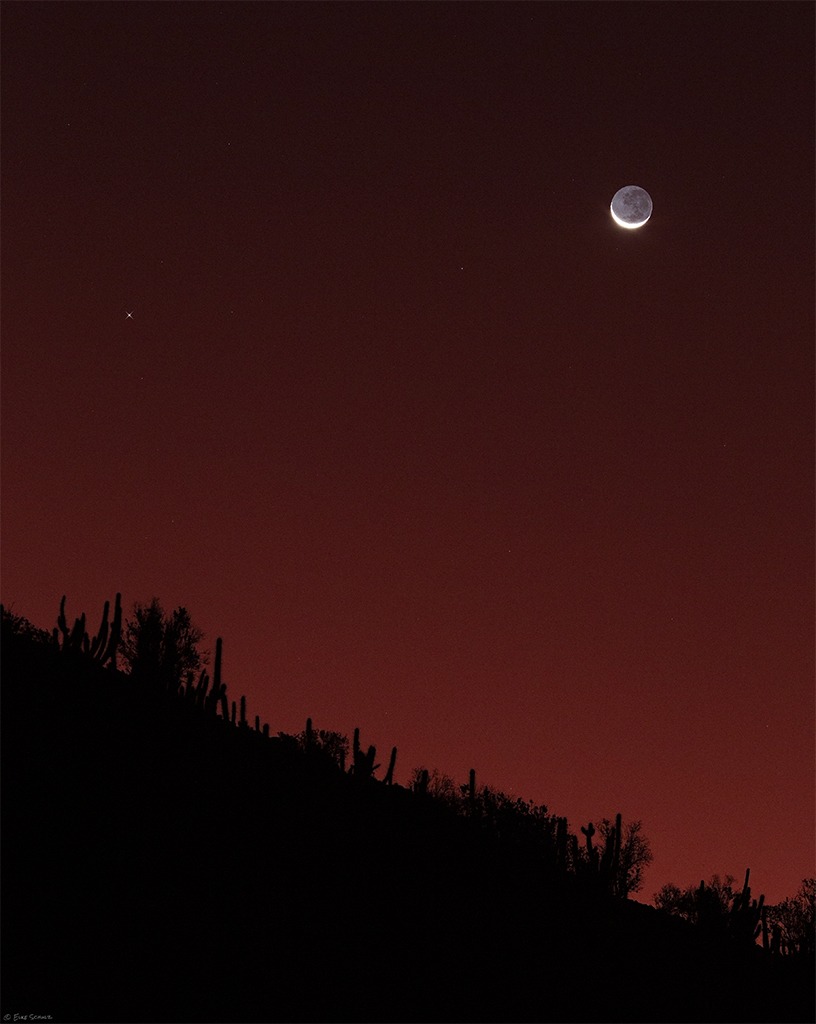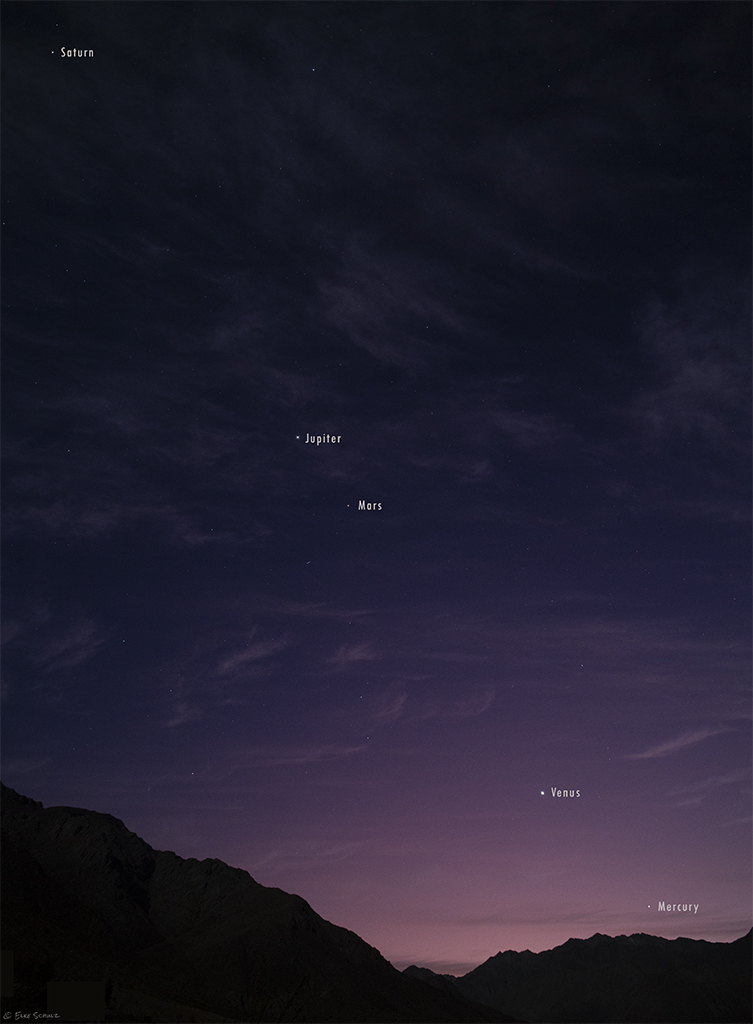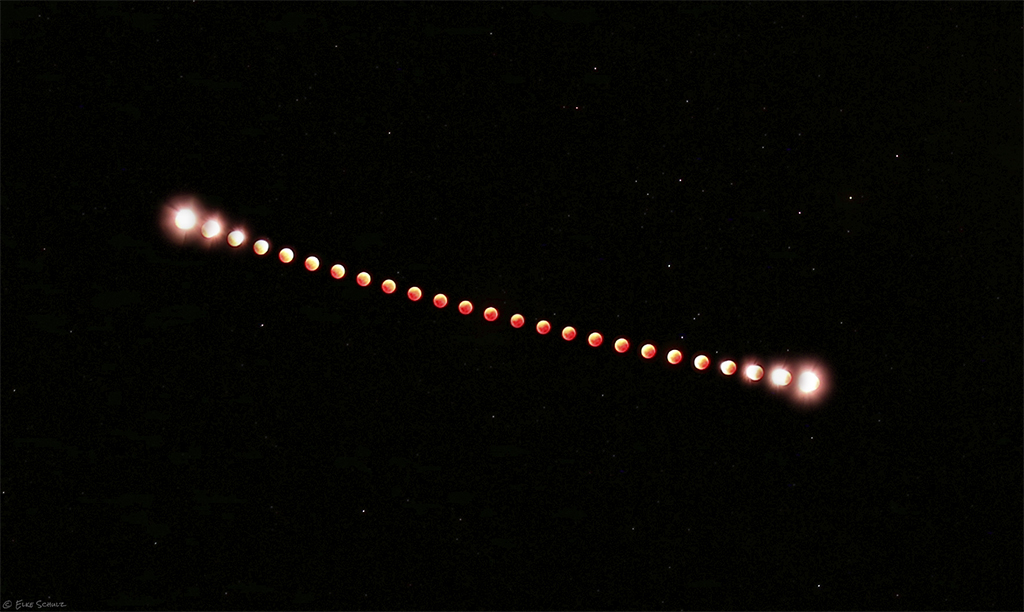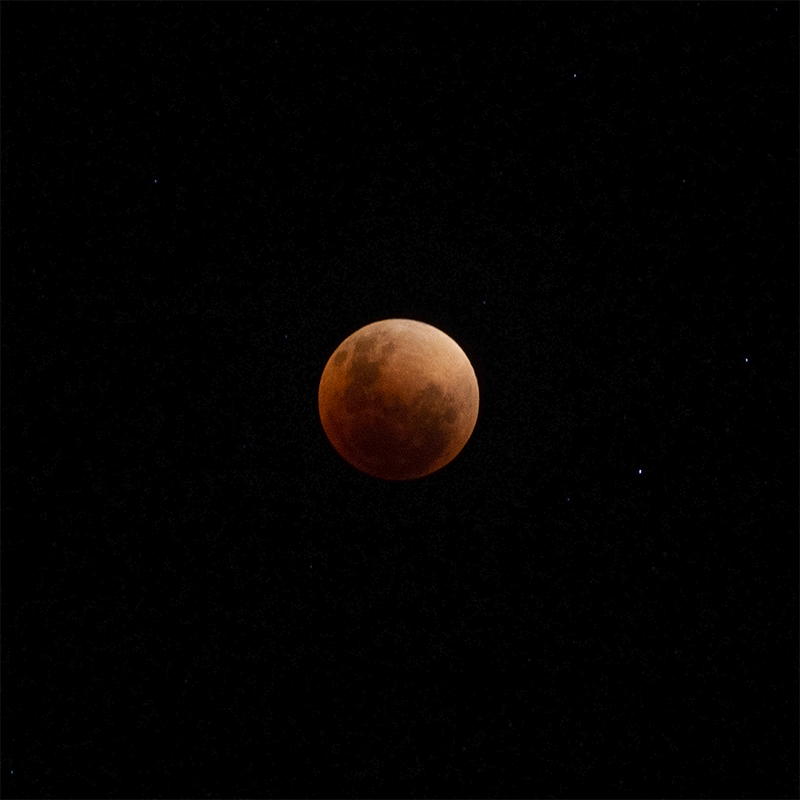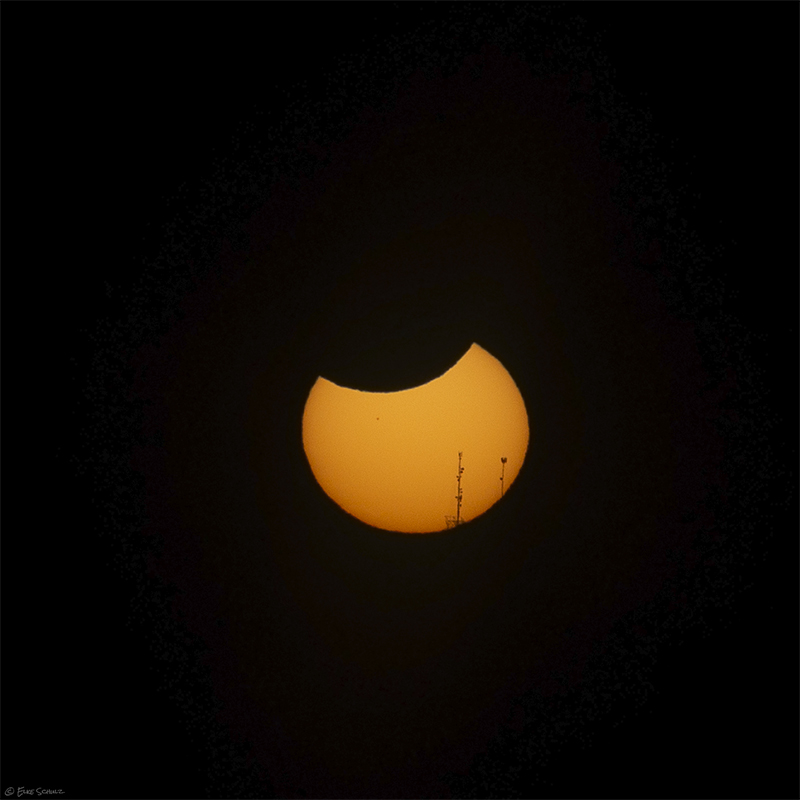My First Article in Spanish
I am pleased to announce that my first article in Spanish has been published in the Chilean online journal Chile Astronómico (número 2, agosto 2023, pp. 38-41). The article is entitled “Protegiendo los cielos oscuros de Río Hurtado” (Protecting the dark skies of Río Hurtado) and deals with the problem of light pollution and how the small valley of Río Hurtado is trying to obtain certification as an international dark-sky
Ready for the Night
Tonight I had the distinct pleasure of watching the sunset at the Obstech El Sauce Observatory. While the telescopes were ready for another night of imaging under our beautiful dark skies, I was able to enjoy the stunning colors of the sunset, highlighting the lovely meeting between the crescent moon and the planet Venus, while the Seven Sisters (aka the Pleiades star cluster) were watching from the upper-right corner.
Lunar occultation of Jupiter
In the evening hours of February 22 we could observe a lunar occultation of the planet Jupiter. Shortly after sunset, Jupiter disappeared behind the unlit part of the moon and reappeared half an hour later under the bright crescent moon. This lunar occultation was visible only in parts of Argentina, Antarctica, Chile, and the Falkland Islands. My photos show the beginning of the occultation, its end, and Jupiter and three of
Heavenly Rendezvous
Tonight, I had the opportunity to catch the heavenly rendezvous of Venus and Saturn with the young waxing crescent moon. To capture this lovely threesome, I had to select a location with an undisturbed view towards the west, and hope that there wouldn’t be any dense haze on the horizon. I found the perfect spot at the El Sauce Observatory (Río Hurtado, Chile) and was rewarded with a clear view
Moon-Mercury Conjunction
On August 29th Mercury and the thin waxing crescent moon met up for a lovely celestial show. The view from the Río Hurtado valley in Chile was spectacular, as the sunset colors changed from pink to purple to dark red. Add to that the brilliant earthshine of the moon and the silhouettes of cacti on the horizon, and you have the right ingredients for a wonderful photo.
Creative Callas
A collage of macro shots of some picturesque purple callas.
Planetary party
*Update: My image of the planetary lineup was chosen by NASA as their astronomy picture of the day (APOD) for June 17, 2022.*Two local papers, El Ovallino and El Día also picked up on the publication of my photo as APOD on the NASA website.These mornings are the perfect time to watch the five planets, that are visible to the naked eye, form a beautiful line shortly before sunrise. Interestingly
Blood Moon Composite
A composite of the total lunar eclipse from May 15-16, 2022. Overall, I used 25 frames taken around totality. As background serves an image from the maximum of the eclipse.
Super Flower Blood Moon
On Sunday night, we could watch how the full Flower Moon moved through Earth's shadow, resulting in a total lunar eclipse. Since the Moon was close to Earth, this was also a Super Moon. Because the eclipsed Moon turns into a dark red color, its popular name is Blood Moon. Thus, we were witnessing a Super Flower Blood Moon. With a total duration of 5 hours and 19 minutes, it was
Partial Solar Eclipse
We were treated to a partial solar eclipse on April 30, 2022. Partial solar eclipses happen when the Moon comes between the Sun and Earth, but the Moon only partially covers the Sun's disk. Here at the southern edge of the Atacama Desert, the Moon covered roughly 23 percent of the Sun's disk during the maximum of the eclipse. All this happened deep in the western sky, and shortly before




